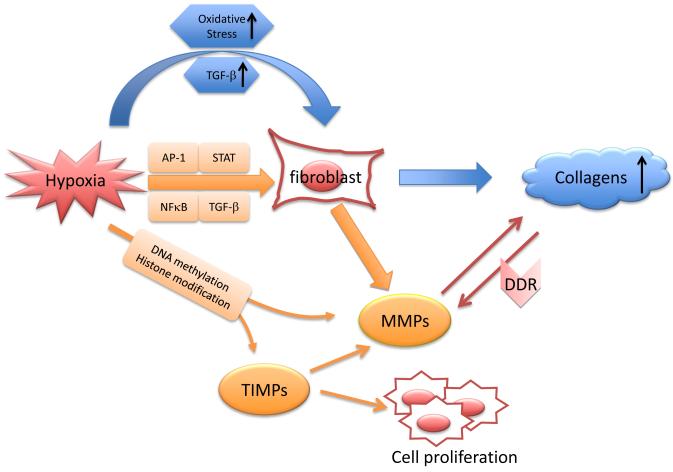Figure 1.
Schematic mechanisms of hypoxia-induced collagen deposition. Hypoxia stimulates the production of collagens via oxidative stress or transforming growth factor beta (TGF-β) signaling pathway (in blue). Oxidative stress can also activate TGF-β, which might induce the expression of pro-fibrogenic genes, including those encoding collagens. Matrix metalloproteinases (MMPs) and the endogenous tissue inhibitors of metalloproteinases (TIMPs) can be regulated at transcriptional levels through epigenetic mechanisms (i.e. DNA methylation and histone modification) in response to hypoxia. In addition, hypoxia activates several transcriptional factors (e.g. nuclear factor-kappaB [NF-κB] , AP-1 [activating protein 1], STAT [signal transducers and activators of transcription-1] and TGF-β) that subsequently bind to some of the key transcriptional binding sites, regulating MMP gene expression (in orange). The MMPs digest collagens and reduce collagen deposition; as an autoregulation, collagens bind to their discoidin domain receptor (DDR) to upregulate MMPs levels. In addition to the inhibitory effect on MMPs, TIMPs also have a key role in cell proliferation and cell death.

